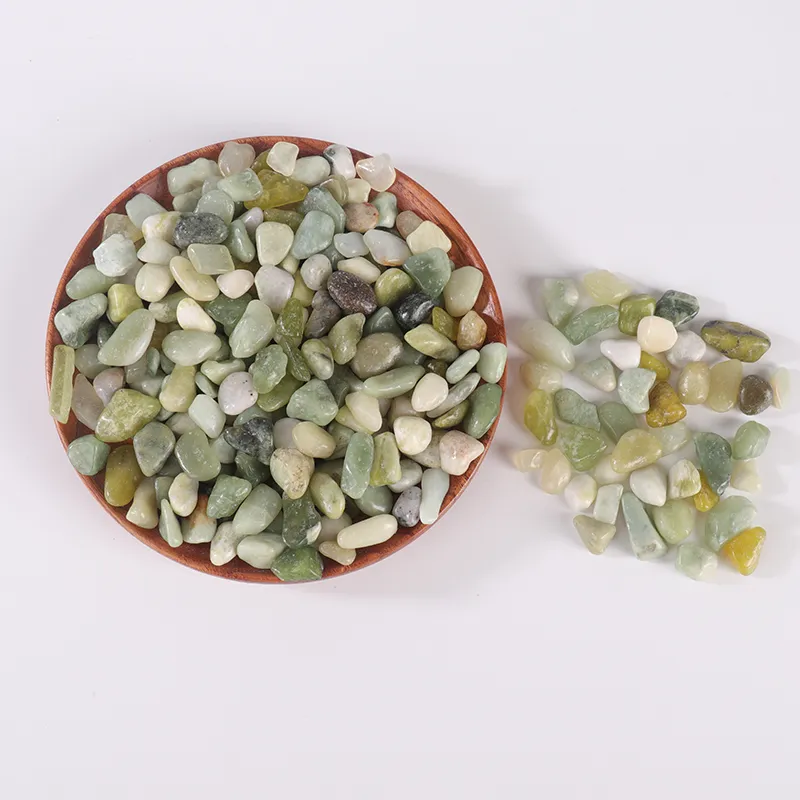8 月 . 07, 2024 19:30 Back to list
Understanding the Pricing Factors of Green Jade in the Market Today
The Cost of Green Jade A Rare Treasure in the Gem Market
Green jade, highly revered in various cultures, particularly in East Asia, serves not just as a decorative stone but also carries profound cultural significance. The allure of green jade can be traced back thousands of years, where it symbolized purity, prosperity, and longevity. However, understanding the cost of green jade requires a closer look at several influencing factors including quality, origin, demand, and market trends.
The Attributes of Quality
First and foremost, the cost of green jade is predominantly determined by its quality, which is assessed based on factors such as color, transparency, and texture. The richest green hue, known as ‘Imperial Green,’ is the most coveted and commands premium prices. This particular shade is characterized by its vivid color saturation and translucency, which enhances the stone's natural beauty. Additionally, jade's texture plays a significant role; a smooth, polished surface reveals superior craftsmanship and enhances the visual appeal, further elevating the stone's value.
Another essential aspect of jade quality is its type. The two primary types of jade are nephrite and jadeite, with jadeite generally being more valuable due to its rarity and superior qualities. Nephrite tends to be more abundant and thus typically has a lower market price. However, both types have their own unique charm and history, contributing to the diverse demand in the market.
Geographic Origins
green jade cost

The provenance of jade also significantly influences its cost. Jadeite from Myanmar, particularly the region of Hpakant, is frequently recognized as the most valuable due to its quality. Meanwhile, nephrite is primarily sourced from regions such as China and New Zealand. The geographical characteristics and mining conditions often dictate the availability and quality of the jade, thereby affecting its market price. Dealers and collectors are often willing to pay a premium for stones that originate from well-known, high-quality sources.
Supply and Demand Dynamics
The financial aspect of green jade is also closely intertwined with global supply and demand dynamics. In recent years, there has been an increasing interest in jade among collectors and investors, particularly from emerging markets in Asia. This growing demand can drive prices upward, especially for top-quality pieces. Seasonal trends, fashion influences, and cultural events can create spikes in demand, further impacting market prices.
On the supply side, jade mining operations can be fraught with challenges, including environmental regulations and geopolitical factors, particularly in regions where jade is extensively mined. These constraints may lead to fluctuating supply levels, which can significantly affect the cost. As the availability of high-quality jade decreases, prices are likely to rise.
Conclusion
In conclusion, the cost of green jade encompasses a complex interplay of several factors, including quality attributes like color and type, geographic origins, and the prevailing trends in supply and demand. As a multifaceted gem deeply embedded in cultural traditions and social values, green jade represents more than just a monetary value; it serves as a testament to heritage and artistry. Whether sought after for personal adornment, investment, or cultural significance, green jade continues to be a cherished treasure, capturing the hearts of many and commanding a place in both history and the modern market. As interest in this beautiful stone continues to grow, understanding its valuation becomes essential for collectors, jewelers, and enthusiasts alike.
-
Tumbled Nephrite Jade in Feng Shui: How to Attract Balance and Prosperity
NewsOct.18,2024
-
Nephrite Jade in Home Décor: Bringing Earthy Elegance to Your Living Space
NewsOct.18,2024
-
How to Spot Authentic Tumbled Nephrite Jade: A Buyer’s Guide
NewsOct.18,2024
-
Healing Properties of Tumbled Nephrite Jade: A Look into Ancient Wellness Practices
NewsOct.18,2024
-
Ethical Sourcing of Nephrite Jade: Ensuring Sustainable and Fair Trade Practices
NewsOct.18,2024
-
Caring for Your Tumbled Nephrite Jade: Maintenance Tips for Longevity
NewsOct.18,2024






